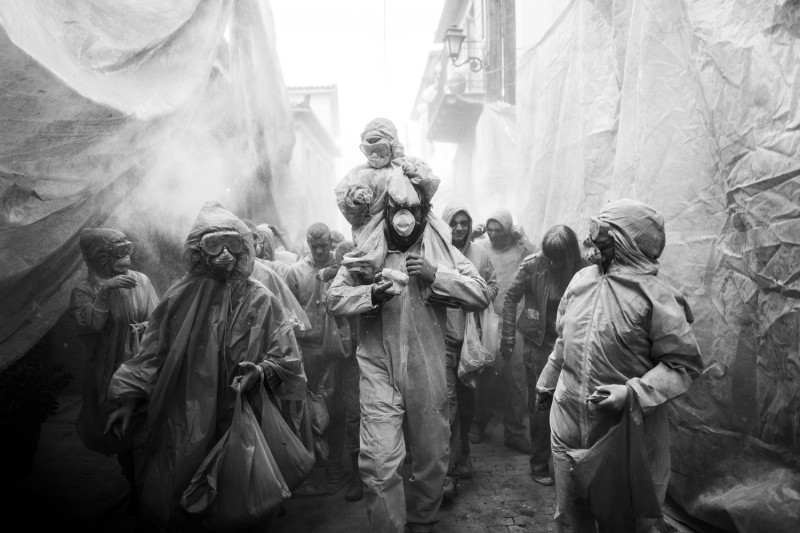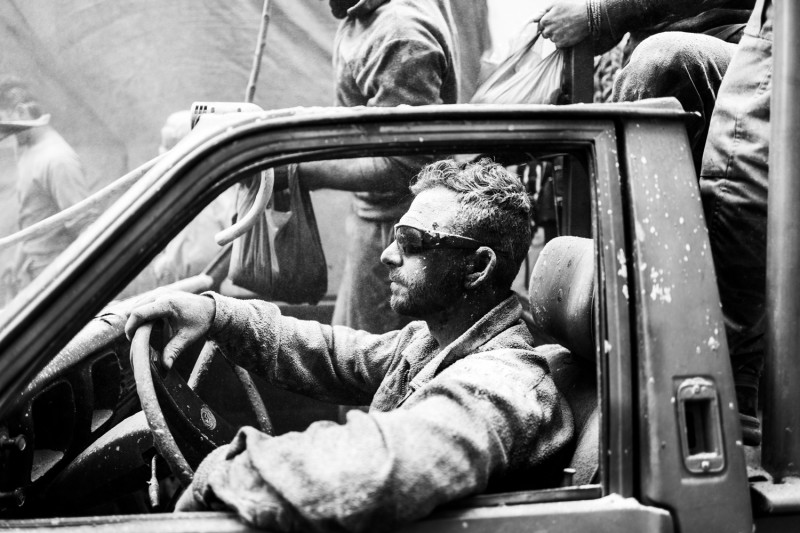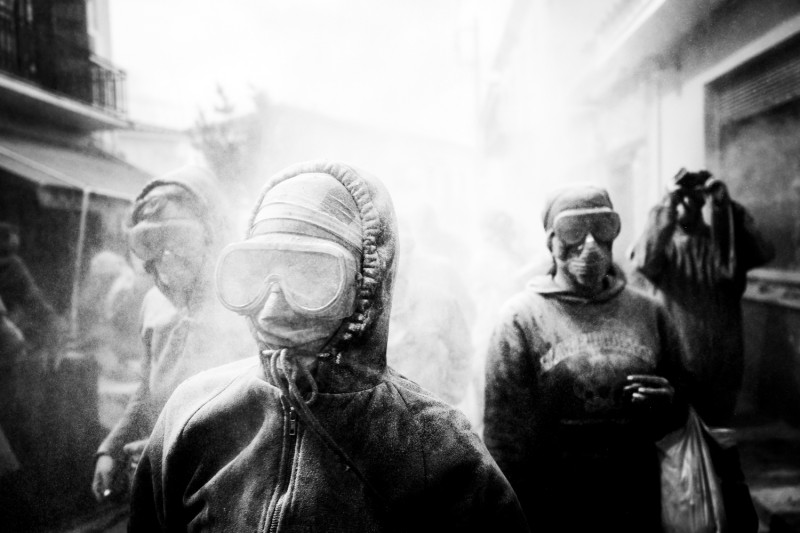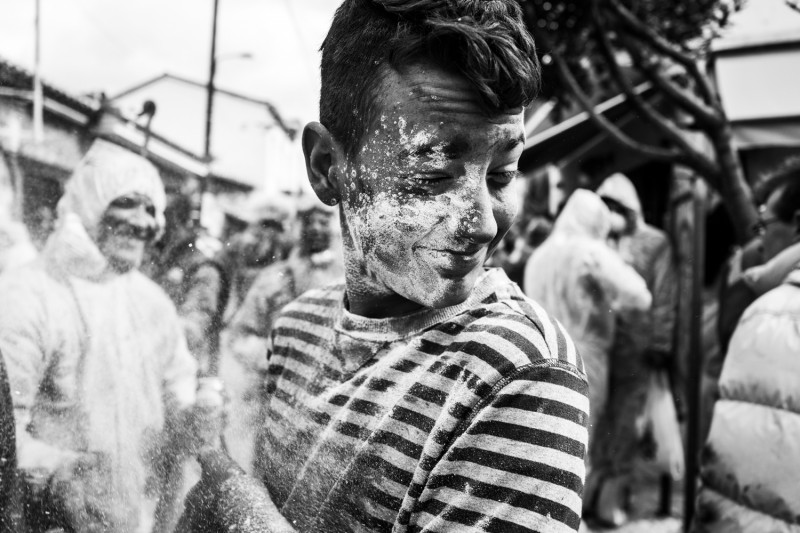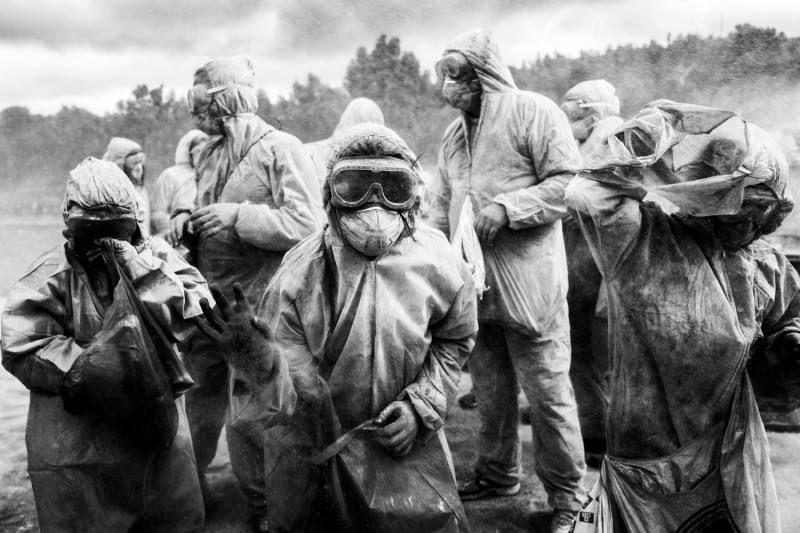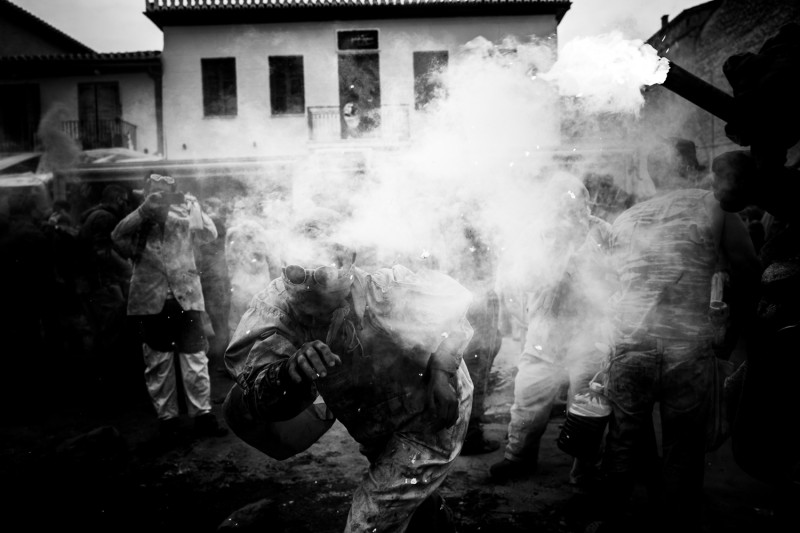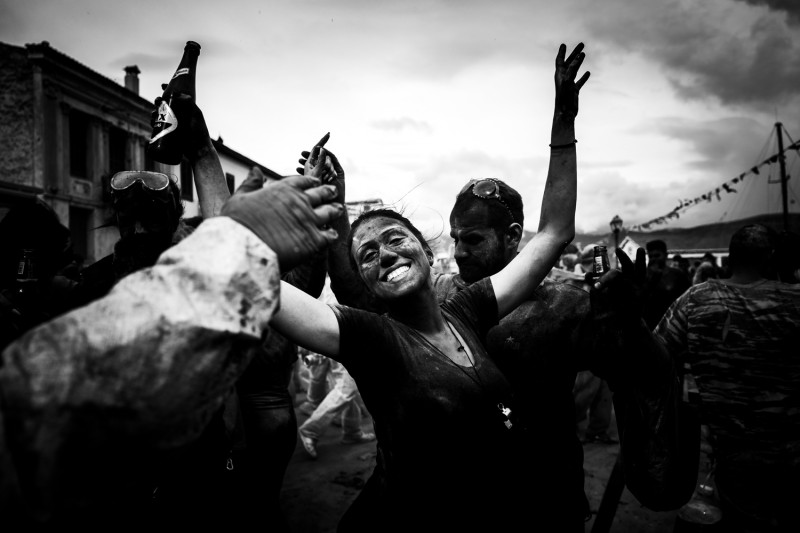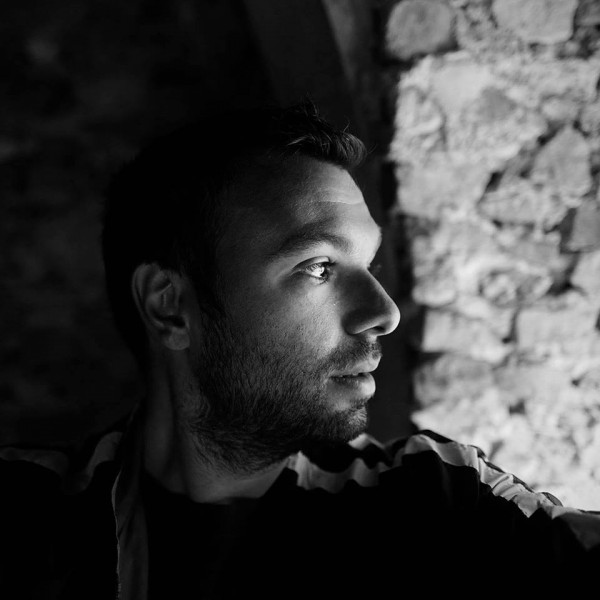Flour Wars
Flour Wars
George Tatakis
October 15, 2016
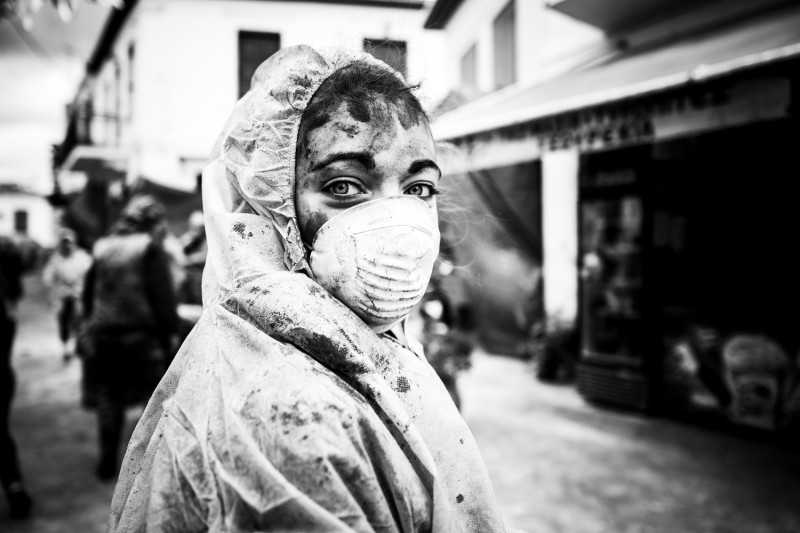
“On my way back from the Carnival of Zante, I decided to visit the almost two century-old custom of flour wars in Galaxidi. From what I’ve heard, the custom is supposed to have originated either in Sicily or Byzantium. It is also said that there was no way to stop it, even during Turkish rule. The event takes place on Ash Monday only, and nothing similar takes place anywhere else in Greece.
The locals are dressed in their old clothes and most of them have their faces painted blue, ash or ochre. They have one or two cloth bags hanging on either side, full of coloured flour. If you don't have any, free flour is provided by the local authorities. The event starts with a parade of home-made chariots and pedestrians. It is easy to tell which road it will follow, as the buildings are covered in canvas to protect them from the flour.
I had wrapped my camera meticulously in cling film, as I’d been given some hints as to what was coming. I bought myself a protective uniform from a local shop and, after giving it some thought, I got a second one and put it on top. They also give you a surgical mask with the uniform. ‘Please wear it. Trust me, you’re gonna need it.’
The parade follows a narrow road, moving towards the road along the harbour, where the dancing also starts. There I was, standing in the middle of the parade, against the flow of people, holding up my camera. That was enough to make me the number one target. In about, well, one minute, the mixture of flour all over me had turned me ash coloured, and I could hardly move my eyelids as my tears had turned the flour around my eyes into paste.
The party moves to the port where people start to light fires in the middle of the road and dance around them to different kinds of music. Some of them even light up colourful smoke bombs. Provisions are made for those who prefer to watch rather than participate. They can stand on the other side of the harbour where the participants are not allowed go. If you’re on the side of the event, then you’re going to participate no matter what.”
The locals are dressed in their old clothes and most of them have their faces painted blue, ash or ochre. They have one or two cloth bags hanging on either side, full of coloured flour. If you don't have any, free flour is provided by the local authorities. The event starts with a parade of home-made chariots and pedestrians. It is easy to tell which road it will follow, as the buildings are covered in canvas to protect them from the flour.
I had wrapped my camera meticulously in cling film, as I’d been given some hints as to what was coming. I bought myself a protective uniform from a local shop and, after giving it some thought, I got a second one and put it on top. They also give you a surgical mask with the uniform. ‘Please wear it. Trust me, you’re gonna need it.’
The parade follows a narrow road, moving towards the road along the harbour, where the dancing also starts. There I was, standing in the middle of the parade, against the flow of people, holding up my camera. That was enough to make me the number one target. In about, well, one minute, the mixture of flour all over me had turned me ash coloured, and I could hardly move my eyelids as my tears had turned the flour around my eyes into paste.
The party moves to the port where people start to light fires in the middle of the road and dance around them to different kinds of music. Some of them even light up colourful smoke bombs. Provisions are made for those who prefer to watch rather than participate. They can stand on the other side of the harbour where the participants are not allowed go. If you’re on the side of the event, then you’re going to participate no matter what.”
ALL IMAGES ON THIS PAGE: © George Tatakis

